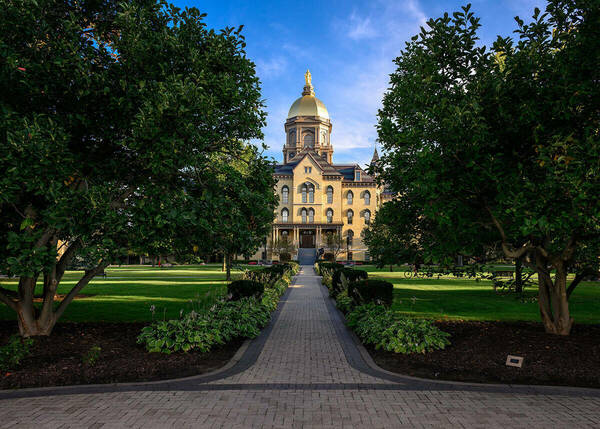Into high waves and turbulence: engineers deploy smart devices to improve hurricane forecasts
Predicting hurricane intensity has lagged behind tracking its path because the forces driving the storm have been difficult and dangerous to measure—until now.
“When we’re talking 150, 200-mph winds, with 30-foot waves, you don’t send a boat and crew out there to collect data,” said David Richter, associate professor of civil and environmental engineering and earth sciences and faculty affiliate of the Environmental Change Initiative at the University of Notre Dame.
“We can now send drones and other ‘smart’ oceanographic instruments into hurricanes to take measurements in conditions previously considered too extreme to deploy anything.”
Richter is the lead investigator on a $9-million Office of Naval Research (ONR) Multidisciplinary University Research Initiative (MURI) grant that brings together experts in atmospheric science, oceanography, and physics-informed modeling to improve hurricane intensity forecasts.

Data from the storm’s center will provide crucial insights into the transfer of energy within the hurricane, particularly at the volatile boundary between atmosphere and ocean.
Collaborators on the project include the 53rd Weather Reconnaissance Squadron of the United States Air Force Reserve and NOAA’s Atlantic Oceanographic and Meteorological Laboratory. Their planes, known as “hurricane hunters,” will carry and release some of the team’s autonomous, data-collecting instruments during routine storm missions.
A tube-like device with sensors, a dropsonde, will record a snapshot of wind speed, air pressure, temperature, and humidity on its way from the aircraft to the ocean’s surface. Other air-dropped instruments (profiling floats) will measure water temperature, surface wind and wave height—a key factor in determining surface roughness.
Saildrones, piloted remotely by NOAA researchers, will navigate into the storm’s center to record such metrics as wind speed, air temperature and humidity, atmospheric pressure, currents and waves. Unmanned aircraft will measure the storm’s low-altitude turbulence.

The collected data will help researchers verify the physical processes dominant in such extreme conditions and develop novel simulation strategies for improving forecasts.
“The goal is always to get better at predicting when and where hurricanes are going to strike and how destructive they’ll be when they land,” said Richter. “The more lead time you have to warn or evacuate people, the better.”
Richter’s research team for this project titled SASCWATCH: Study on Air-Sea Coupling with WAves, Turbulence, and Clouds at High winds, includes researchers from Colorado State, Colorado School of Mines, University of Washington, Woods Hole Oceanographic Institution, Texas A&M University, Mississippi State University, and University of Miami.
Latest Research
- University of Notre Dame and IBM Research build tools for AI governanceMain Building (Photo by Matt Cashore/University of Notre Dame) …
- Smarter tools for policymakers: Notre Dame researchers target urban carbon emissions, building by buildingCarbon emissions continue to increase at record levels, fueling climate instability and worsening air quality conditions for billions in cities worldwide. Yet despite global commitments to carbon neutrality, urban policymakers still struggle to implement effective mitigation strategies at the city scale. Now, researchers at Notre Dame’s School of Architecture, the College of Engineering and the Lucy Family Institute for Data & Society are working to reduce carbon emissions through advanced simulations and a novel artificial intelligence-driven tool, EcoSphere.
- Seven engineering faculty named collegiate professorsSeven faculty members in the Notre Dame College of Engineering have been named collegiate professors—a prestigious title awarded by the university and college in recognition of excellence in research, teaching and service. The designation may be conferred on faculty at the assistant, associate or…
- ‘A special challenge’: German studies scholar wins National Humanities Center fellowship for research on medieval womenFor CJ Jones, the joy of research is not the answers but the journey. And the next step on that journey is a fellowship with the National Humanities Center. …
- Notre Dame Lead Innovation Team partners with local WIC program to identify, prevent lead poisoning in childrenB.A.B.E. store “shoppers” now have something new to help their families: free lead screening kits offered by the University of Notre Dame’s Lead Innovation Team.
- Notre Dame Welcomes Ninth Cohort of Warrior-Scholars for Transformative Academic JourneyNOTRE DAME, IN – The University of Notre Dame recently concluded its ninth successful Warrior-Scholar Project (WSP) boot camp, hosting 34 dedicated Warrior-Scholars from June 21st to 28th. This intensive, week-long academic residency provided transitioning service members and veterans…













